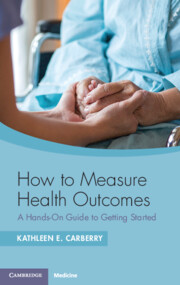Book contents
- How to Measure Health Outcomes
- Reviews
- How to Measure Health Outcomes
- Copyright page
- Contents
- Preface
- Acknowledgments
- Introduction
- Chapter 1 Measuring the Outcomes of Health Care
- Chapter 2 Why Measure Outcomes?
- Chapter 3 Where to Start?
- Chapter 4 Identifying Outcome Measures
- Chapter 5 Collecting and Analyzing Outcome Data
- Chapter 6 Scaling Outcome Measurement
- Chapter 7 Now the Journey Begins
- Index
- References
Chapter 3 - Where to Start?
Published online by Cambridge University Press: 27 April 2023
- How to Measure Health Outcomes
- Reviews
- How to Measure Health Outcomes
- Copyright page
- Contents
- Preface
- Acknowledgments
- Introduction
- Chapter 1 Measuring the Outcomes of Health Care
- Chapter 2 Why Measure Outcomes?
- Chapter 3 Where to Start?
- Chapter 4 Identifying Outcome Measures
- Chapter 5 Collecting and Analyzing Outcome Data
- Chapter 6 Scaling Outcome Measurement
- Chapter 7 Now the Journey Begins
- Index
- References
Summary
This chapter establishes a basic vocabulary in measuring outcomes as the first step in getting started to measure. It then outlines the steps in getting started: 1. identifying the cohort or segment; 2) gathering baseline data (retrospectively and prospectively); and 3. identifying the outcomes that matter most to people. It also addresses where to start based on if you are a clinician or health care administrator either from a provider organization or payer organization.A table is included that describes the different types of data and data sources that can be used for baseline data gathering as well as the advantages and disadvantages of each.
- Type
- Chapter
- Information
- How to Measure Health OutcomesA Hands-On Guide to Getting Started, pp. 17 - 28Publisher: Cambridge University PressPrint publication year: 2023

